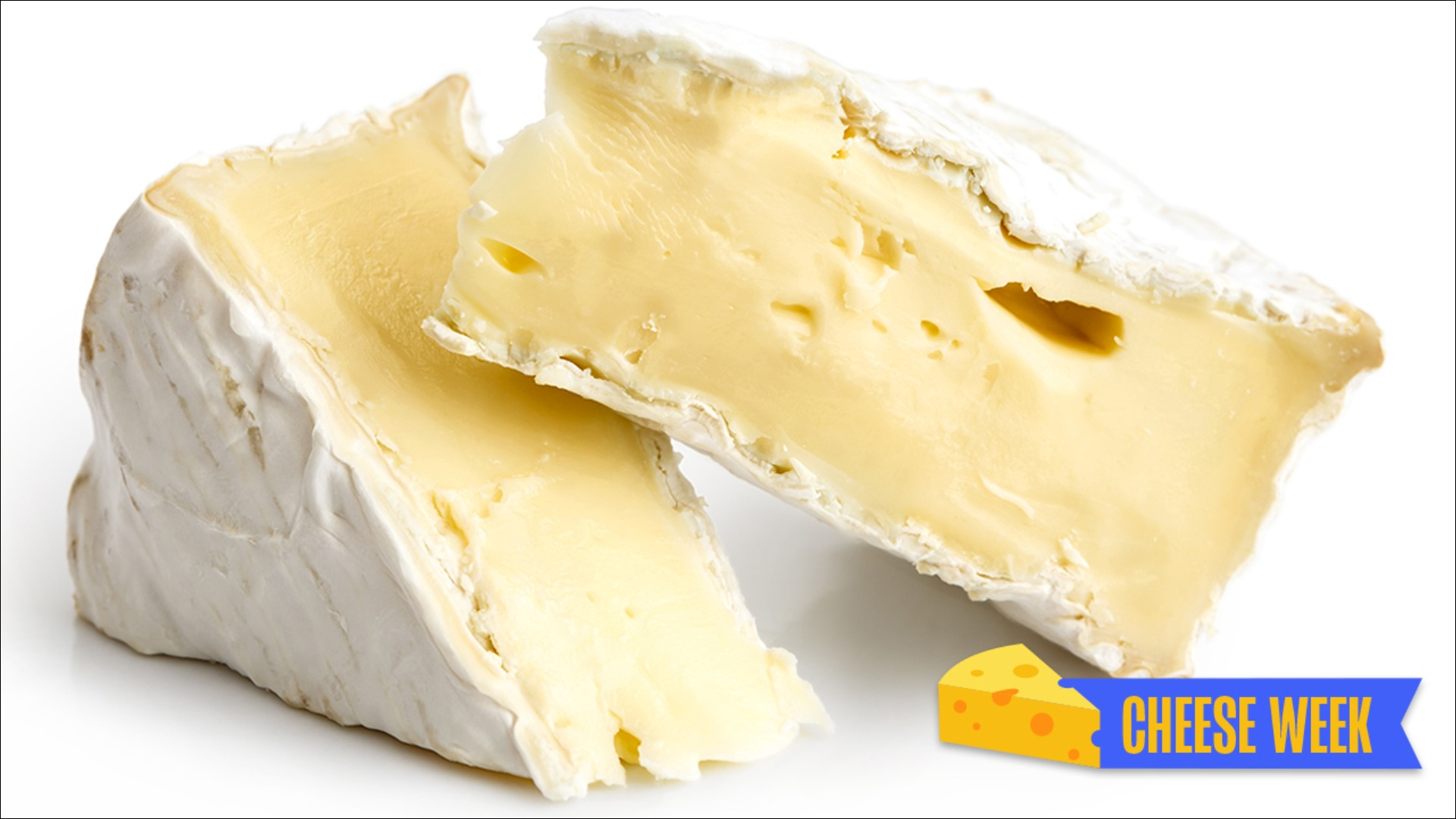Should You Eat The Brie Rind?
Welcome to Cheese Week, The Takeout's weeklong praise of cheeses.
Few things in this strange old life are as weird and delicious as a nice soft cheese. It's creamy, and often kind of funky, and sometimes it comes in its own little outfit. But should you eat that outfit? I always eat the outfit—okay, fine, the rind—because it's delicious, but sit down around a big plate of baked brie with a group of people and at least one of them's going to leave that white exterior behind. So who's right? Can you pick up a big ol' wheel of brie and just take a bite like it's a burger? Should we eat the rind?
According to Lisa Futterman, the wholesale account manager for Chicago's Pastoral Artisan Cheese, Bread & Wine, the answer is an unequivocal yes. "Without question. Only [skip it] if you really, really don't like it. There is no reason not to."
The casing is penicillum candidum, "that beautiful white rind," as she puts it, and it is delicious.
Futterman acknowledges that mold allergies may put people off, but even that doesn't stop her: "I am personally allergic to mold, and I eat the rind. It's a different kind of mold." The Food Allergy Resource and Research Network at the University of Nebraska-Lincoln backs it up:
According to Steve Taylor, Ph.D., director of the Food Allergy Research and Resource Program (FARRP), no evidence exists that moldy cheeses are potentially harmful to mold-allergic individuals. Consumers with mold allergy generally are responding to the inhalation of mold spores. On the other hand, ingestion of moldy cheeses generally involves the ingestion of mycelia, not spores. Although some spores may indeed be present in the cheese, the digestive process may destroy the allergens.
Some physicians do caution their patients about the ingestion of moldy cheeses but this caution is not based on any solid evidence of which Dr. Taylor is aware. He further adds that the main mold allergen in the environment is Alternaria and Alternaria would not be a common mold spoilage species in cheeses (more likely on spoiled fruit).
On the subject of what you should or should not eat: This should probably go without saying, but not all cheese rinds should be gobbled up. Waxed rind cheese, or cheeses with a plastic coat, should obviously not be eaten. "It's edible, it's not going to kill you," Futterman says, "but it's not a pleasant experience." She also advises against eating natural rind cheeses, which look like rocks or stones—not only are those rinds not intended for consumption, but they are also often the only packaging a cheese has, so it's not particularly sanitary. "Only the real crazy people eat those... if it looks like a rock, don't eat it." (Good advice in general.)
But it's not just that it's safe or acceptable to eat the rind on brie. The rind is "an integral part of the experience" of eating brie, Futterman says. The difference in texture is noticeable, but more importantly, the penicillium rind on brie, which begins as a white layer but becomes ivory or almost yellow as it ages, possesses the strongest flavor. That's especially true of aged cheeses, "but even if the cheese is very very young, it's going to add a particular flavor profile to the experience."
The same goes for other soft cheeses with rinds as well. In my work as an occasional fancy whiskey shopgirl, I also deal with fancy-ass, cheeseboard-ready cheeses, and I've noticed that people are often concerned when they pick up a washed-rind cheese that they can smell through the packaging. With something like Tulip Tree Creamery's Foxglove (a personal favorite of mine), the aroma is quiet potent, even through plastic, and customers often assume that means it has somehow turned. That's not the case at all, and Futterman explains why: "Washed-rind cheeses have a pink-orange kind of a rind that is just awesome to eat... if you like stinky cheese, that's going to be the stinkiest part of the cheese."
As for baked brie, don't skip the outside layer in favor of the gooey middle if you like strong flavors in your cheese. I know it's tempting, but as Futterman puts it, "Heating the cheese makes any strong flavor even stronger."
Her last piece of advice concerns heat, too: If you don't like stinkier cheese, don't heat it. And if you don't want the rind, save it for me.
